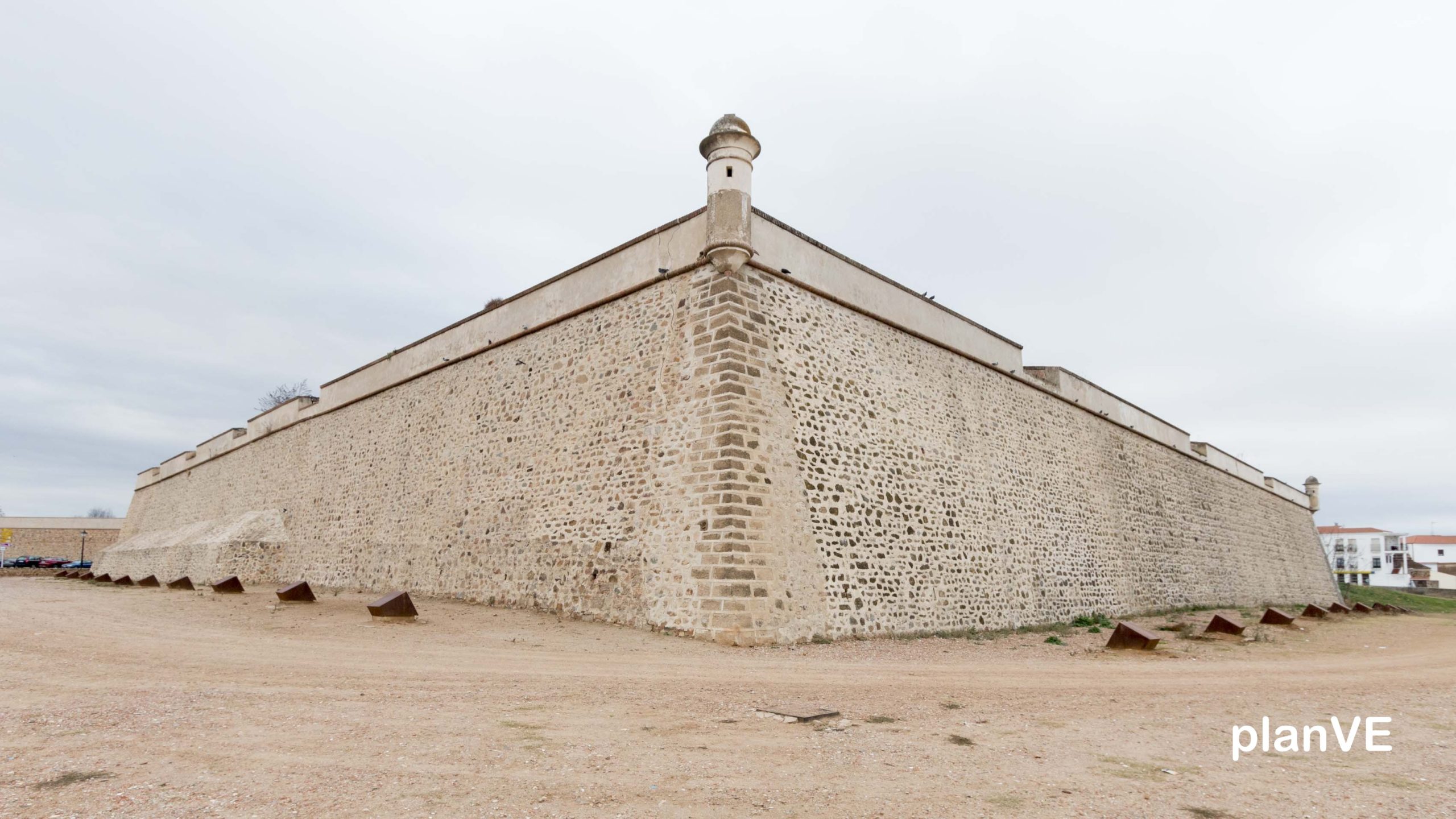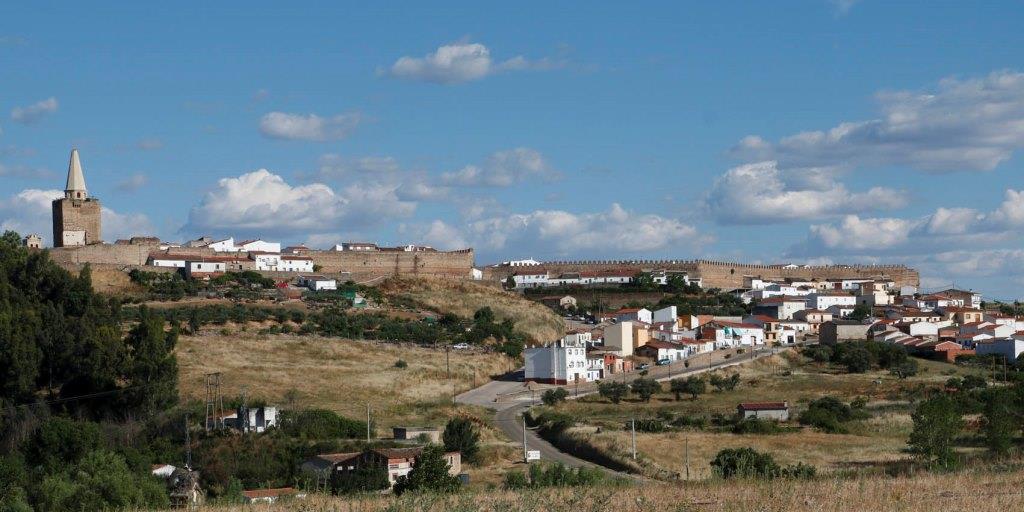
The historical events have left their mark in Extremadura since the first civilizations settled in our territory. This autonomous community in Spain treasures numerous defensive constructions that are silent witnesses of the passing of time. These walls formed defensive lines around a castle and in many cases protected a whole city. In Extremadura it is an experience to visit these monuments and walk on them or along side these magnificent historical constructions.
The wall of Trujillo
 One of the most famous defensive walls of recent months is in Trujillo, a beautiful city in Extremadura. They have been shown all over the world thanks to the successful television series “Game of Thrones”. The Wall of Trujillo has a Muslim origin from which the original layout is preserved. This Wall dates to the 11th Century, even though there was a smaller fortified enclosure of the city, which is even older.
One of the most famous defensive walls of recent months is in Trujillo, a beautiful city in Extremadura. They have been shown all over the world thanks to the successful television series “Game of Thrones”. The Wall of Trujillo has a Muslim origin from which the original layout is preserved. This Wall dates to the 11th Century, even though there was a smaller fortified enclosure of the city, which is even older.
Most of the currently conserved portions of the Wall are a post -Muslim, Christian legacy from the 12th to the 15th Centuries. It was constructed in granite with stone masonry, although in the low areas of the construction and in the corners of the towers we can see the use of ashlars. When walking through the historic center of Trujillo we can follow the course of the Wall in serpentine like fashion and spot the 22 towers and also, four of the original seven doors.
Badajoz and the biggest citadel in Europe
The Wall of Badajoz is just one of the elements that compose a splendid military fortification of the early Middle Ages. The Wall shares prominence with towers, pits, forts and gates. This defensive fortress can be proud of being part of the largest citadel in Europe.

The original fortification is of Almohad origin and was ordered by the founder of the city Ibn Marwan. After the re-establishment of the Taifa Kingdom, the Citadel or Alcazaba was built in 1169. Specifically, the Wall has had various successive extensions. It is easy for a visitor to enjoy the citadel by following the top of the Wall. Access to the citadel can be made by any of the four doors.
The fortification of Plasencia

Plasencia was founded in the 12th Century and this required a defensive wall, thus the origin of the fortification. It began to be built in 1178 but was not completed until the year 1197. Although fragments of the wall are now lost, it is believed that the original perimeter was 2.39 kilometers long. Towers with semicircular floors reinforced the walls and 26 of the original towers are still preserved. To visit the Wall of Plasencia visitors must stroll through the center of the old city and pass through any of the eight existing doors, gates and wickets. A walks through the barbican is an experience to enjoy, especially at certain times of the year such as on “Martes Mayor” (Major Tuesday).
The muslim wall of Mérida
The fortress in Merida has the shape of a citadel and is the oldest Muslim fortification in the Iberian Peninsula built in the Ninth Century. It is an almost square enclosure of about 550 meters, with walls of about 2.70 meters thick and 10 meters high that are made mostly with granite ashlars reaped from Roman and Visigoth constructions.
The original Merida Wall was from the days of the Roman Empire, when the purpose was to defend the bridge leading to the city from the inside. In the 5th Century the Visigoths reinforced it and doubled the width of the walls. During the Muslim rule, they completely dismantled the wall and took advantage of much of the material to build the current citadel.
The roman origin of the Cáceres wall
 The walled enclosure of Cáceres was erected during the Romans and later reconstructed by the Visigoths, the Muslim and the Christians. Today an important part of the wall still exists but it is difficult to see some sections because it is attached to the surrounding buildings. One of the most interesting parts of the Cáceres Wall is the South or River gate, also known as “Arco del Cristo” (the Arch of Christ). You can also admire several towers along your visit to the Cáceres Wall. One of the most famous doors is the “Arco de la Estrella” (Arch of the Star), which appears in the seventh season of “Game of Thrones”.
The walled enclosure of Cáceres was erected during the Romans and later reconstructed by the Visigoths, the Muslim and the Christians. Today an important part of the wall still exists but it is difficult to see some sections because it is attached to the surrounding buildings. One of the most interesting parts of the Cáceres Wall is the South or River gate, also known as “Arco del Cristo” (the Arch of Christ). You can also admire several towers along your visit to the Cáceres Wall. One of the most famous doors is the “Arco de la Estrella” (Arch of the Star), which appears in the seventh season of “Game of Thrones”.
The defensive nature of the wall of Alcántara
The Wall of Alcántara is situated at a strategic location. Visitors can distinguish two different fortifications, now merged into one construction: the Arab citadel and the walled enclosure of modern times. After the “Reconquista”, when Christians were able to recover the land form the Iberian Muslims, in the 15th Century, the walled enclosure was extended and gave rise to the second fortification.
The wall of Jerez de los Caballeros
The Wall of Jerez de los Caballeros has its origin in the old Arab Citadel and was later consolidated by the Christian Order of the Templar. Along its perimeter the visitor will find a number of semicircular towers, many of them have been integrated into current urban landscape. Originally the Wall had six gates or doors, however, only two are visible today.
Galisteo has a wall of pebbles
 Worth visiting in Galisteo is its unique Wall made with stones from the Jerte River. It has an irregular layout but adapts to the conditions of the terrain. The origin of the construction is Almohad, from the time of the Muslim domination, dated to the beginning of the 13th Century. It underwent numerous reconstructions but the original layout was respected and even today in some section you can see the crenellated top. A visit to the Wall of Galisteo offers a pleasant excursion to enjoy the views of the fertile plains of the Alagón River. The total length of the perimeter of the walled enclosure is 1200 meters.
Worth visiting in Galisteo is its unique Wall made with stones from the Jerte River. It has an irregular layout but adapts to the conditions of the terrain. The origin of the construction is Almohad, from the time of the Muslim domination, dated to the beginning of the 13th Century. It underwent numerous reconstructions but the original layout was respected and even today in some section you can see the crenellated top. A visit to the Wall of Galisteo offers a pleasant excursion to enjoy the views of the fertile plains of the Alagón River. The total length of the perimeter of the walled enclosure is 1200 meters.
A portuguese wall in olivenza
 Don Dinis, King of Portugal, who restored the walls of the old Templar fortress, built the medieval walled enclosure of Olivenza in the 14th Century. These walls are three meters thick and had a height of twelve meters and were defended by 14 towers. The emblematic keep or “Torre del Homenaje” is 37 meters in height and is the tallest of the fortress towers of the Spanish –Portuguese border. The Wall has two gates; one is called “Alconchel” and the other “los Angeles”.
Don Dinis, King of Portugal, who restored the walls of the old Templar fortress, built the medieval walled enclosure of Olivenza in the 14th Century. These walls are three meters thick and had a height of twelve meters and were defended by 14 towers. The emblematic keep or “Torre del Homenaje” is 37 meters in height and is the tallest of the fortress towers of the Spanish –Portuguese border. The Wall has two gates; one is called “Alconchel” and the other “los Angeles”.
The village of Granadilla and its almohad wall
Worth visiting the Village of Granadilla in the north of the Province of Cáceres and walking along the top of the Wall to enjoy unparalleled views on the Gabriel and Galan Reservoir. The town that was abandoned in the 60´s of the past Century for the construction of the marsh boasters a Wall of Almohad origin and in good condition.
Original article by Ainhoa Miguel
Translated by Susana Windt
Date un paseo por las murallas de Extremadura
planVE la guía de ocio de Extremadura
Published on November 2017










